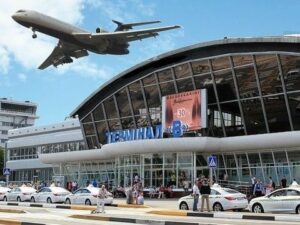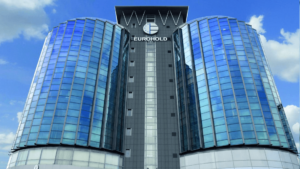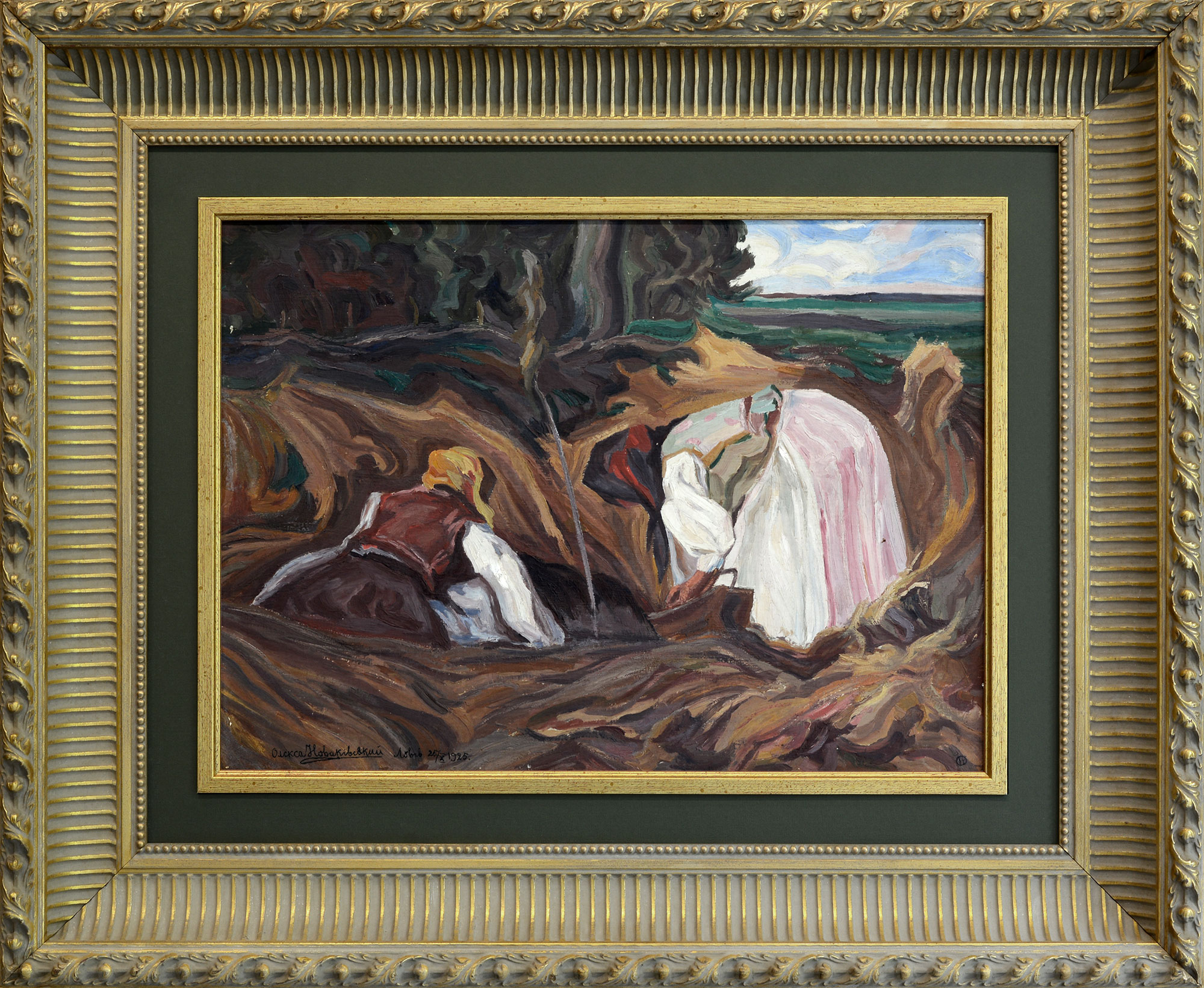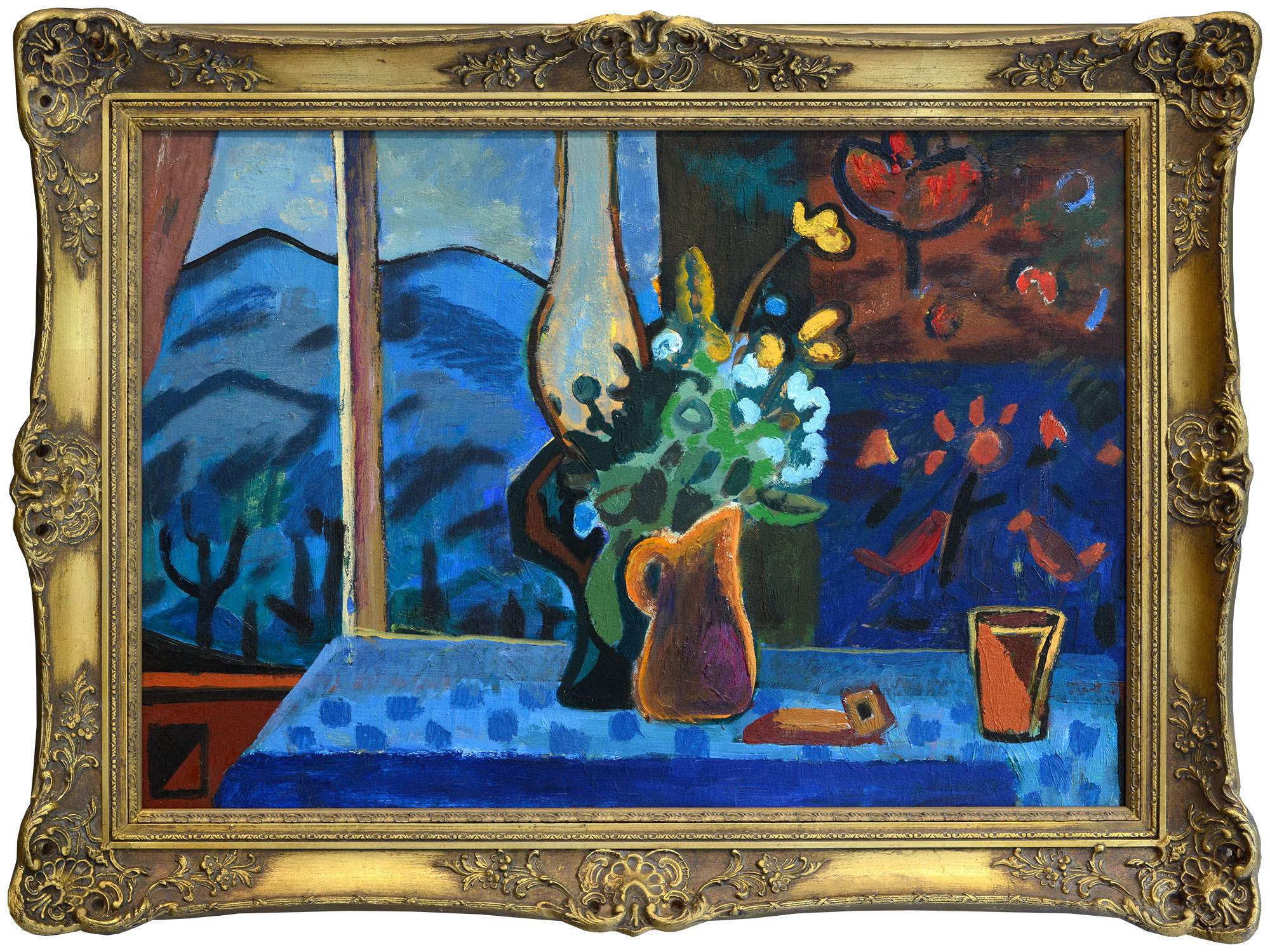
The state-owned enterprise Boryspil International Airport (Kyiv) announced a tender on May 15 for the purchase of compulsory civil liability insurance for owners of ground vehicles (OSAGO), according to the Prozorro electronic public procurement system.
The expected cost of the services is UAH 596,516 thousand. No tender security is required. The deadline for submitting bids is May 23. The winner of a similar tender in April this year was Euroins Ukraine.

Insurance company Euroins Ukraine (Kyiv) increased its authorized capital to UAH 123.065 million through an additional issue of shares worth UAH 45.125 million.
According to information provided by the insurer in the National Securities and Stock Market Commission’s disclosure system, this is stated in the report on the results of the share issue without a public offering, approved by the supervisory board on March 21, 2025.
According to the report, 4.513 billion shares with a par value of 0.01 UAH were placed during the issue.
Euroins Ukraine is a universal insurance company that has been operating in the Ukrainian market since 1992. It is part of the Bulgarian insurance group Euroins, which is one of the largest independent insurance groups operating in Central, Eastern, and Southeastern Europe.

From May 14 to 22, the Goldens auction house will hold its 68th auction entitled ”Ukrainian Collectible Art.” The auction selection includes works by iconic artists of Ukrainian art of the 20th and early 21st centuries. The collection has been carefully curated to reflect various artistic trends, generations, and regions, and showcases the depth, tradition, and innovation of Ukrainian painting.
The collection includes works by Oleksa Novakivsky, Ivan Trush, David Burliuk, Yosyp Bokshay, Serhiy Shyshko, Mykola Gluschenko, Iryna Beklemisheva, Roman Selsky, Viktor Ryzhykh, Fedir Manailo, Andriy Kotska, Hryhoriy Gavrylenko, Igor Grigoriev, Maria Prymachenko, Marfa Tymchenko, Ivan Marchuk, Emma Andievska, and others.
Classical and plein air painting in the auction collection is represented by the works of Kyiv artists Serhii Shyshko, Yevhen Volobuev, and Pavlo Gorobets. These artists embody the academic school with a deep sense of landscape and genre scenes. Serhii Shyshko is a master of Kyiv cityscapes, Yevhen Volobuev is a perceptive analyst of Ukrainian nature, and Pavlo Gorobets is a vivid representative of pictorial realism with a lyrical touch.

The section of naive and decorative art, which includes works by Marfa Tymchenko, Maria Prymachenko, Yelizaveta Mironova, and Stepan Ganzi, also deserves special attention. This group embodies the continuity of Ukrainian naive and decorative art. Maria Prymchenko is already rightly considered a national symbol, whose fantastic fauna and floral motifs have become a visual code of Ukrainian culture. Marfa Tymchenko developed the decorative branch in the traditions of Petrykivka painting, while Yelizaveta Mironova and Stepan Ganja preserved and reinterpreted traditional plots in a modern plastic language.
The selection also includes works by Iryna Beklemisheva and Viktor Grygorov, representatives of a generation that worked against the backdrop of socialist realism, finding depth of form, image, and color in art. Their works are an attempt at internal analysis of reality, psychological depth, and compositional harmony.
The painting of the Lviv school of the early 20th century is represented by rare works by Ivan Trush and Oleksa Novakivsky, while two works by Roman Selsky from the 1970s and 1980s demonstrate the development and transformation of the region’s artistic tradition.
The painting of the Transcarpathian school is represented in the selection by works by the founder of the Transcarpathian school of painting, Yosyp Bokshay, his student Andriy Kotska, Fedir Manaylo, and the underground artist of the 1960s, Ferenc Seman.

The mood of the 1960s continues in the works of artists of intellectual resistance: Igor Grigoriev, Grigory Gavrilenko, and Viktor Ryzhykh. Their work was distinguished by its profound criticism of the surrounding reality and graphic expressiveness. Their works are full of freedom and inner resistance.
The auction also features early works by artists who are still active today: Ivan Marchuk, Emma Andievska, and Lyubomyr Medvid. These authors can be considered, in their own way, the embodiment of a personal breakthrough in art: Ivan Marchuk created a unique technique called “plentalism” and a special and recognizable world of pictorial images, Lyubomyr Medvid, as a representative of the Lviv expressive school, delves into ontological themes, revealing the depths of human existence, and Emma Andiyevska masterfully combines mythology, fantasy, and abstraction, creating a unique world of images and meanings.
Two works by Mykola Hluschenko from the 1970s also deserve special attention. During this period, the artist turned to creating landscapes full of bright colors and light, demonstrating the influence of Impressionism and Post-Impressionism. His works from this period are distinguished by their decorativeness, generalized forms, and bold use of color, which emphasizes the artist’s maturity.
The top lots of the current auction are rare works: “Breath of Spring” (1995) by Ivan Marchuk, “Sea. Chatyr-Dag” (“Hand of the Creator”) (1970) by Mykola Hluschenko, “In the Park of Holosiiv” (1975) by Serhii Shyshko, Flowers on the Alley (1920-1930s) by Ivan Trush, Clown (1960s) by Ferenc Seman, and Long-Necked Woman in Flowers (1972) by Maria Pryimachenko.
The exhibition “Ukrainian Collectible Art” is open to visitors from May 14 to 22 in the hall of the Goldens auction house, as well as online at www.gs-art.com. For registration and participation in the auction, please call +38 050 462 95 32 or register on the website to be able to place bids online yourself.
Schedule of the exhibition and online auction:
May 14–22, 2025
12:00 p.m. – 7:00 p.m.
Open every day
Admission to the exhibition is free.
The final bidding will begin with the sequential closing of lots on May 22 (Thursday) at 7:00 p.m. online at www.gs-art.com.
Address: Kyiv, 4 Leonida Pervomaiskoho Street
GOLDENS Auction House
+38 050 462 95 32
contact@gs-art.com

According to SERBIAN ECONOMIST, in April 2025, French company Eviden, part of the Atos group, signed a €50 million contract with the Serbian Ministry of Information Technology and Electronic Governance to establish a National Artificial Intelligence Factory (AI). This project aims to accelerate the development of AI in the country and strengthen technological autonomy using European technologies.
A comprehensive approach to AI development
The National AI Factory will consist of a Center of Excellence and a supercomputing platform designed to support innovation in key sectors such as healthcare, energy, transportation, and public administration. The project will provide access to these resources for government agencies, academic organizations, and businesses.
Technical infrastructure
The project will install a BullSequana XH3000 supercomputer, designed and manufactured at Eviden’s flagship factory in France. The system has a computing power of up to 25 petaflops, includes 300 graphics processors and 2.5 petabytes of data storage. This supercomputer will form the basis of the Center of Excellence, providing the necessary computing power for the development and implementation of innovative AI solutions.
Eviden
In addition, the BullSequana AI software platform will be deployed to accelerate the development of AI applications. The software layer will integrate Mistral AI technology, which provides cutting-edge European generative AI models to support breakthrough solutions.
– International cooperation and training
The project will involve AI experts from Eviden teams in France, the Czech Republic, and Serbia. These experts will ensure the effective application of AI in Serbia’s strategic sectors and will also participate in the recruitment and training of engineers and academic staff across the country, helping to transform the Center of Excellence into a self-sufficient innovation hub.
– Statements from officials
Mihailo Jovanovic, Director of the Information Technology and E-Government Directorate of Serbia, said:
EdTech Innovation Hub
“This partnership with Eviden, a leading European player in supercomputing and AI, is a historic moment for the digital future of our country, demonstrating the spirit of Franco-Serbian cooperation. It is not just a technological leap forward, but also a statement of our commitment to stimulating innovation, developing our economy, and strengthening our position as a regional leader in AI.”
Source: https://t.me/relocationrs/959

Mobile teams from the V.P. Filatov Institute of Eye Diseases and Tissue Therapy of the National Academy of Sciences of Ukraine have made more than 600 visits to hospitals and perinatal centers over the past four years to diagnose and treat premature newborns, according to Filatova. Filatov Institute of Eye Diseases and Tissue Therapy of the National Academy of Medical Sciences of Ukraine have made more than 600 visits to hospitals and perinatal centers to diagnose and treat premature newborns, according to Oleg Zadorozhny, senior researcher at the Filatov Institute of Eye Diseases and Tissue Therapy of the National Academy of Medical Sciences of Ukraine.
“Our specialists have gained a lot of experience by traveling with the appropriate equipment to regional hospitals and perinatal centers to diagnose and treat severely premature babies. Over the past four years, more than 600 visits to hospitals have been made, more than 1,500 premature newborns have been screened, and about 200 telemedicine consultations have been conducted,” he said in an interview with the Interfax-Ukraine news agency.
Zadorozhny noted that helping premature newborns with retinopathy in the southern region of Ukraine has become the goal of a joint project with the charity “I Want to See. Southern Region,” under which the Institute has created a Center for the Prevention of Childhood Blindness due to Retinopathy of Prematurity and purchased expensive scientific and clinical equipment.
He added that the Institute’s scientists represent Ukraine in global research on the evaluation of the results of treatment of retinopathy of prematurity in Europe and worldwide as part of international research groups (FIREFLEYE next Study Group and European ROP registry), which are engaged in the study, diagnosis, and development of modern effective methods for the treatment of retinopathy of prematurity.
Source: https://interfax.com.ua/news/interview/1071616.html?utm_source=telegram

Ukrainian company Avtomagistral-Pivden will participate for the first time in a large-scale construction project for new infrastructure in the EU, namely 33.7 km of the Oradea-Arad expressway, with a contract value of EUR460 million, the company’s press service told Interfax-Ukraine. According to the report, the contract was signed on May 15 in Bucharest by Cristian Pistol, director of Romania’s National Road Infrastructure Management Company, Veniamin Rus, head of the Precon Transilvania SLR association (Romania), and Nikolai Timofeev, CEO of Avtomagistral-Pivden.
Romanian Minister of Transport and Infrastructure Sorin Grindeanu, who attended the signing ceremony, said that his country’s government welcomes the cooperation between the local contractor and the foreign company.
For his part, Cristian Pistol noted that the new Oradea-Arad expressway is part of the strategic European corridor Via Carpathia, which will provide road links between the Baltic, Black and Mediterranean seas.
“The signing of the contract is truly a historic event. This is the first time a Ukrainian company has participated in a large-scale project to build new infrastructure in EU countries. Ukraine will supply the European market not with raw materials or cheap labor, but with high-tech services, the foreign exchange earnings from which will compensate for the losses of traditional Ukrainian raw material exports,” said Nikolai Timofeev.
According to him, Avtomagistral-Pivden’s victory also opens up opportunities for other Ukrainian companies that supply construction materials or offer services in the construction sector: the contract will have a significant multiplier effect, boosting demand for Ukrainian products. Avtomagistral-Pivden’s entry into the market for new EU projects will also strengthen economic integration and economic cooperation between Ukraine and Romania as a whole, and will promote the exchange of technologies and experience and the implementation of joint investment projects.
Timofeev emphasized that the prerequisite for winning the tender was Avtomagistral-Pivden’s successful implementation of large-scale projects in Moldova and several initial projects in Romania (repair of a highway in Transylvania and reconstruction of the Satu Mare airport).
“The company has proven itself to be a reliable partner. It has proven its ability to work according to international standards, fulfill its obligations, and ensure high quality and timely completion of contracts,” he said.
As reported, the Oradea-Arad expressway construction project (120.5 km) consists of several sections, for each of which the customer is holding a separate tender. In February 2025, Avtomagistral-Pivden and its partners won the tender for lot No. 1 (33.7 km). This is currently the first contract signed for the construction of Oradea-Arad. Under the terms of the contract, worth a total of EUR 460 million, it must be completed within 24 months.
The first section of the project includes the construction of 32 bridges, interchanges, and overpasses, including a 727-meter overpass over the railway, as well as two parking lots for charging electric vehicles.
Last year, Avtomagistral-Pivden opened an office in Romania, where preparations for the start of work are already underway. At the same time, the company continues to compete for other contracts in the Romanian market.
Avtomagistral-Pivden LLC has been operating since 2004. It designs and builds expressways, bridges, interchanges, airfield complexes, and hydraulic structures. According to Opendatabot, the owner of the company is Alexander Boiko. According to the financial results for 2024, the company’s net profit amounted to UAH 1.363 billion, and its revenue was UAH 13.197 billion.